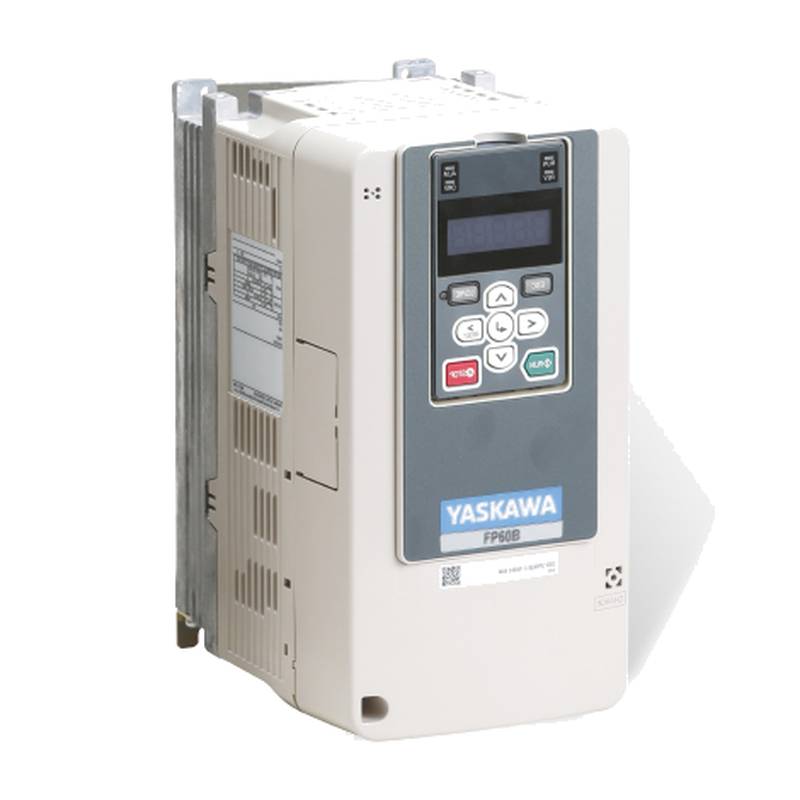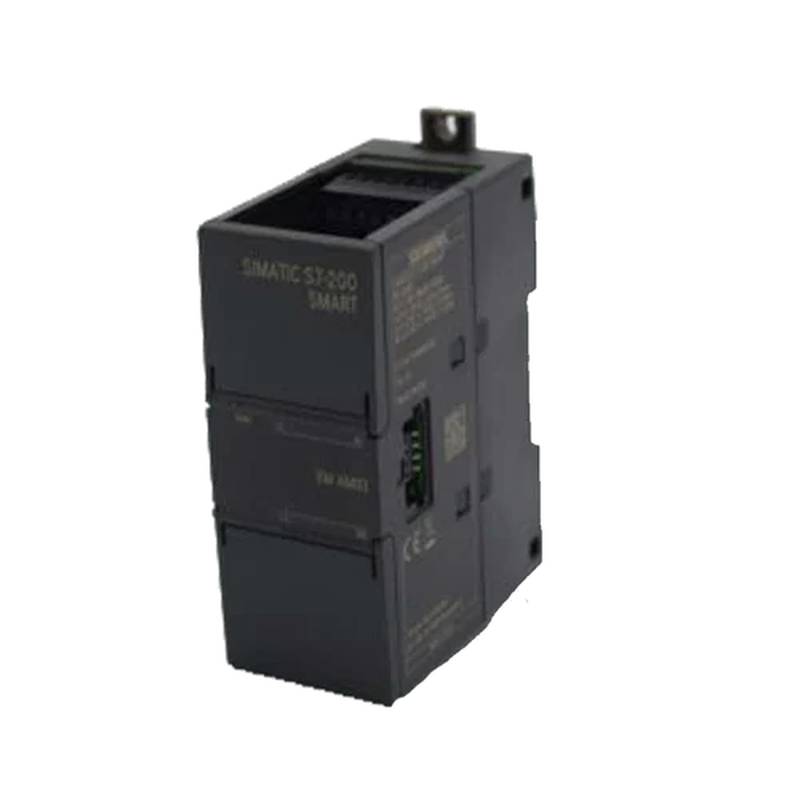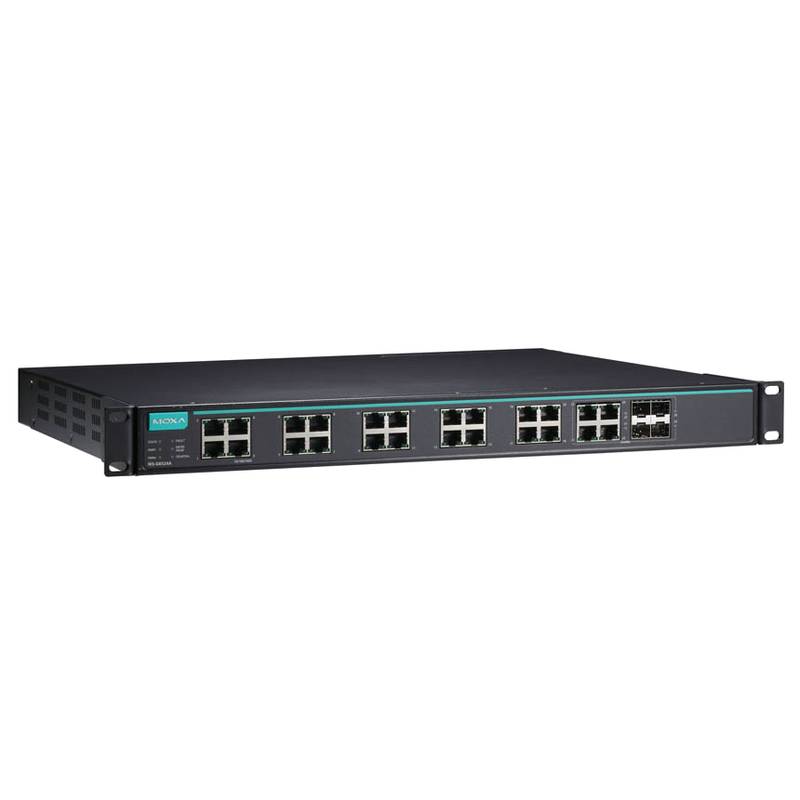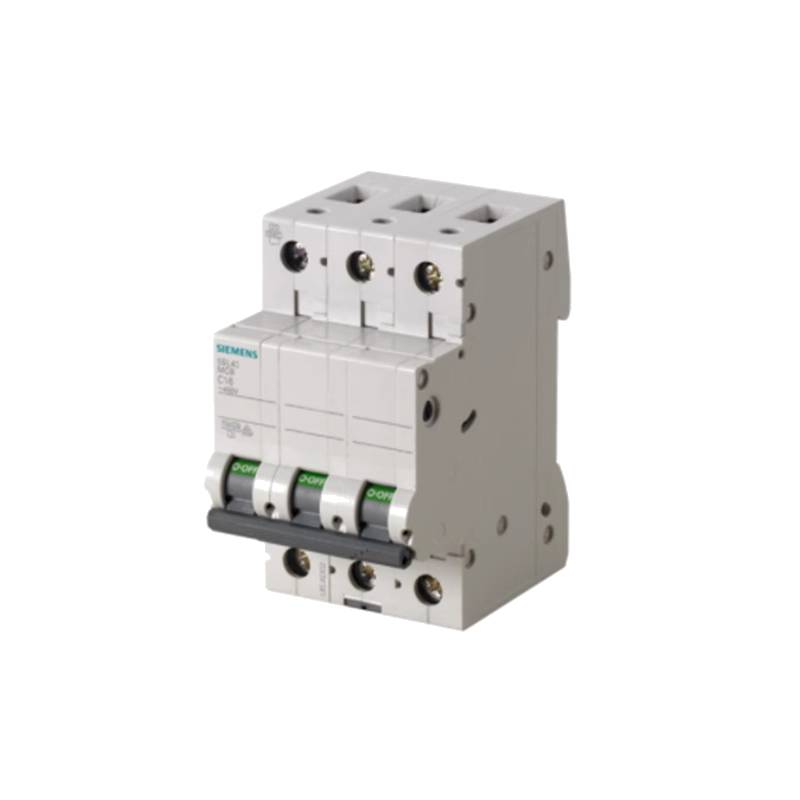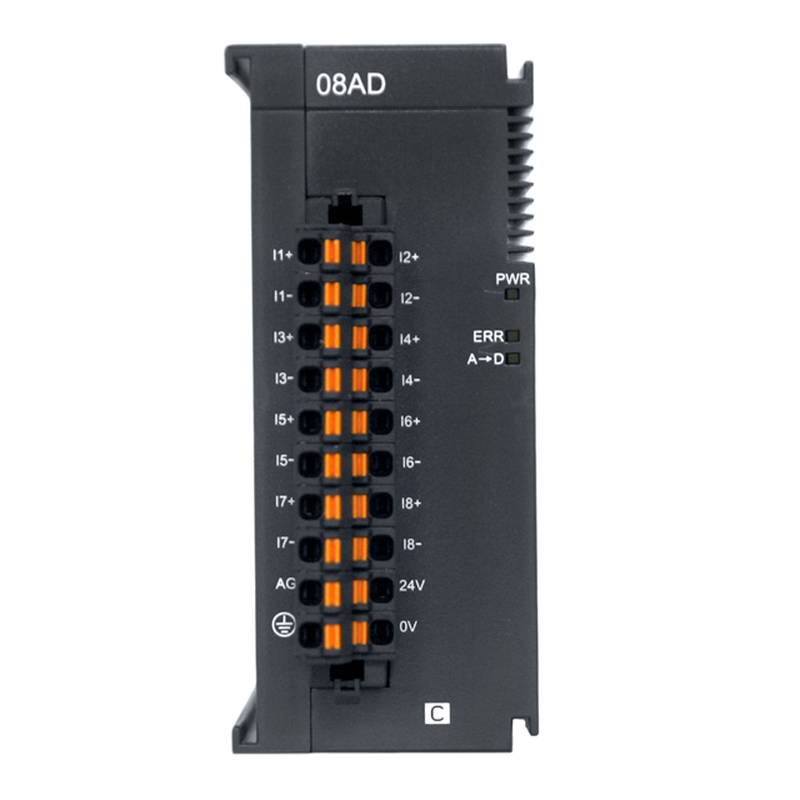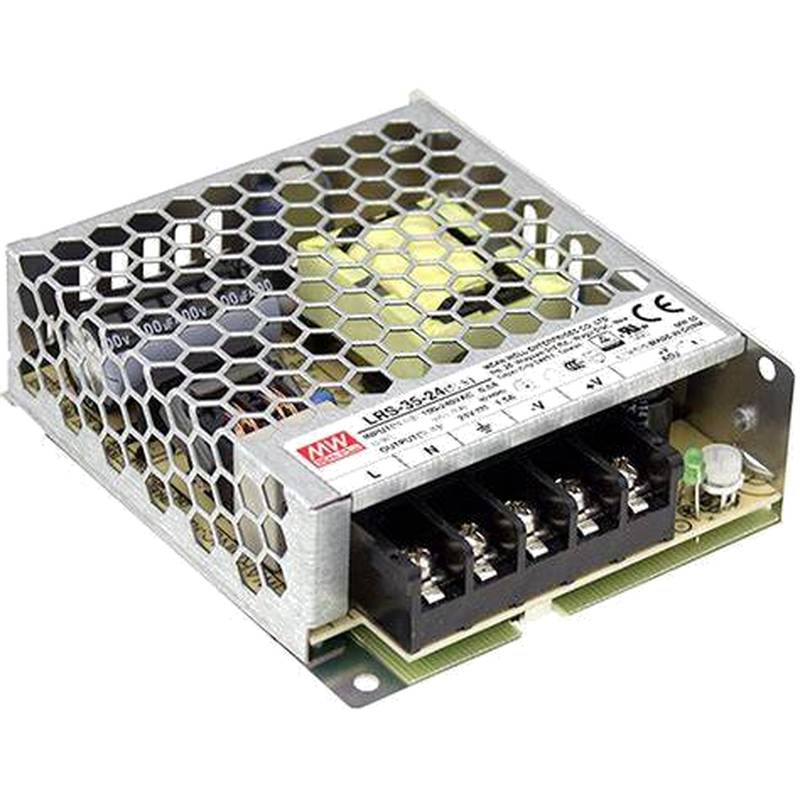
The YASKAWA FP6BB4023AABA FP60B Heavy Duty Pump VFD offers robust control for demanding industrial applications. This 11kW, 23.4A frequency converter excels in delivering precise motor speed regulation, enhanced energy efficiency, and superior operational reliability for heavy-duty pump systems. Its advanced design ensures seamless integration and long-term performance in challenging environments, making it a cornerstone for optimizing fluid management processes.
Product Specifications
| Parameter | Value |
| :------------------- | :-------------------- |
| Model | FP6BB4023AABA FP60B |
| Rated Power | 11 kW |
| Rated Output Current | 23.4 A |
| Input Voltage | 3-Phase, 380-480V AC |
| Output Frequency | 0-400 Hz |
| Control Method | V/f Control, Vector Control |
| Protection Class | IP20 |
| Dimensions (H x W x D) | (Refer to datasheet) |
| Operating Temp. | -10°C to +50°C |
Core Features & Market Positioning
The YASKAWA FP60B series distinguishes itself through its heavy-duty construction and advanced control algorithms, specifically tailored for pump applications. Its robust thermal management system ensures consistent performance under sustained high loads, a critical differentiator in industrial settings. The integrated V/f control and optional closed-loop vector control provide exceptional torque accuracy and speed stability, even with fluctuating load conditions. This positions the FP60B as a premium solution for applications where reliability and precise process control are paramount, offering a significant competitive edge over standard VFDs.
Key Application Scenarios
This YASKAWA FP60B VFD is ideally suited for a wide array of industrial pumping applications. It delivers optimal performance in water supply and wastewater treatment plants, where precise flow rate control and energy savings are essential. Furthermore, it is a robust choice for chemical processing, oil and gas operations, and general industrial fluid transfer systems that require high torque at low speeds and consistent operation under challenging environmental conditions. Its ability to handle heavy loads makes it perfect for large centrifugal pumps, positive displacement pumps, and other critical fluid handling machinery.
Practical System Integration Guidance
Integrating the YASKAWA FP6BB4023AABA FP60B into existing systems involves careful consideration of power, control, and communication interfaces. Ensure the incoming power supply matches the VFD's 3-phase, 380-480V AC rating. For motor connections, utilize shielded cables to minimize electromagnetic interference, especially in noisy industrial environments. Standard wiring practices for motor control should be followed, connecting the motor leads to the VFD's output terminals (U, V, W). Basic parameter configuration, such as motor nominal voltage, frequency, current, and speed, is crucial for initial startup. Advanced setup, including PID control for pressure or flow regulation, can be configured through the VFD's keypad or via communication protocols like Modbus RTU, allowing for sophisticated automation.
Operation and Risk Mitigation
Safe operation of the YASKAWA FP60B VFD is paramount. Always ensure the unit is properly grounded and that all safety interlocks are functional before energizing the system. Avoid operating the VFD outside its specified voltage and frequency ranges. Regular maintenance, including dust removal from heatsinks and checking electrical connections, will prevent overheating and potential failures. Common fault codes, such as "Overcurrent" (e.g., oCr) or "Overvoltage" (e.g., oUr), typically indicate issues with the motor, load, or power supply, requiring prompt investigation. Referencing the product manual for specific code explanations and troubleshooting steps is essential for swift resolution.
Scalability & Long-Term Value
The YASKAWA FP60B series offers a pathway for future scalability and long-term value enhancement. Its compatibility with Yaskawa's broader product ecosystem and common industrial automation platforms allows for seamless integration into larger control systems. For enhanced digital connectivity, optional communication cards can be added, enabling integration with SCADA systems and IIoT platforms for advanced monitoring, diagnostics, and predictive maintenance. This forward-thinking design ensures that the VFD remains a relevant and valuable asset as industrial processes evolve towards greater automation and data-driven optimization.
Frequently Asked Questions (FAQs)
What are the primary benefits of using the YASKAWA FP60B VFD for pump applications?
The YASKAWA FP60B VFD provides significant energy savings by precisely matching motor speed to demand, reducing wasted power. It also offers enhanced control over flow and pressure, leading to more stable process operations and reduced mechanical stress on pump components.
This VFD ensures longer equipment lifespan through soft-start capabilities and optimized motor operation, minimizing wear and tear. Its heavy-duty design handles challenging industrial environments and demanding load profiles effectively.
Furthermore, the FP60B facilitates integration into automated systems, enabling remote monitoring and control, which improves overall plant efficiency and reduces manual intervention.
How do I select the correct YASKAWA FP60B VFD for my specific pump motor?
Motor nameplate data, including voltage, current, power (kW/HP), and frequency, are critical for selection. The VFD's rated output current and power must meet or exceed the motor's requirements.
Consider the application's duty cycle and environmental conditions; the FP60B's heavy-duty rating is suitable for continuous operation and harsh settings. For variable torque applications like centrifugal pumps, a VFD rated for the motor's full load current is typically sufficient.
For constant torque applications or those requiring precise speed control at low speeds, consult the Yaskawa application notes or a Yaskawa representative to ensure proper sizing and configuration, potentially opting for a higher-rated VFD.
What are common installation and wiring considerations for the YASKAWA FP60B?
Ensure the VFD is installed in a clean, dry environment with adequate ventilation to prevent overheating. Proper grounding of the VFD and motor is crucial for safety and electromagnetic compatibility.
Use shielded motor cables to minimize electrical noise and interference, especially in long cable runs. Connect the input power and motor leads according to the terminal designations on the VFD and the wiring diagrams in the manual.
Pay close attention to control wiring for digital and analog inputs/outputs, and the safety circuit if applicable, ensuring correct polarity and secure connections to prevent operational faults.
What is the typical power consumption of an 11kW YASKAWA FP60B VFD?
The 11kW YASKAWA FP60B VFD will draw power according to the load on the connected motor. At full load, it will consume approximately 11kW plus its own internal operational losses.
When operating the motor at reduced speeds or with lower torque demands, the VFD's power consumption will decrease proportionally, offering significant energy savings compared to fixed-speed operation.
The VFD itself has internal losses, typically around 2-5% of the output power, which contribute to heat generation and should be accounted for in ventilation design.
How can I troubleshoot common faults like overcurrent or output phase loss with the YASKAWA FP60B?
For overcurrent faults (oCr), check the motor load; it may be too high for the VFD's rating, or the motor might be stalled. Ensure motor parameters are correctly programmed and that the motor itself is not mechanically overloaded.
Output phase loss can occur due to a faulty motor cable, loose connection, or an internal VFD issue. Inspect all motor connections and cables for damage or poor contact, and verify motor winding integrity.
If the fault persists, it might indicate an internal VFD issue requiring professional diagnosis or repair. Always disconnect power before performing any physical inspections or troubleshooting steps.
What is the rated frequency range of the YASKAWA FP60B VFD, and what are its implications?
The YASKAWA FP60B VFD typically operates with an output frequency range of 0 Hz up to 400 Hz. This wide range allows for precise speed control across diverse applications.
A 0 Hz output capability means the VFD can hold a motor at a standstill, essential for applications requiring precise positioning or preventing backflow. The upper limit of 400 Hz allows for high-speed operation where needed.
The ability to control frequency directly translates to precise speed and torque management of the connected pump motor, optimizing performance and energy efficiency for varying operational requirements.
Can the YASKAWA FP60B VFD be used with single-phase motors?
No, the YASKAWA FP60B VFD is designed for three-phase motors and requires a three-phase input power supply. Using it with a single-phase motor is not supported and can lead to damage.
For applications requiring a VFD to control a single-phase motor, a specific type of VFD designed for single-phase input and output would be necessary. These are less common and often have limitations compared to three-phase VFDs.
If you have a single-phase motor that needs speed control, you would typically need to replace it with a three-phase motor and then use a standard three-phase VFD like the FP60B.
What are the environmental operating conditions recommended for the YASKAWA FP60B?
The YASKAWA FP60B VFD is rated for an operating ambient temperature range of -10°C to +50°C. It's important to maintain temperatures within this range for reliable operation.
Adequate ventilation is crucial; ensure that the VFD is installed in a location where there is sufficient airflow around it to dissipate heat generated during operation. Avoid direct sunlight or proximity to heat sources.
The VFD typically has an IP20 protection rating, meaning it's protected against solid objects larger than 12.5mm but offers no protection against water. It should be installed in a clean, dry environment, free from excessive dust, moisture, or corrosive agents.
How does the VFD improve efficiency in heavy-duty pump systems?
By precisely controlling motor speed, the VFD adjusts pump output to match actual demand, eliminating energy waste from running pumps at full speed unnecessarily. This is particularly effective for centrifugal pumps, where flow is proportional to speed cubed.
The VFD enables soft-start and soft-stop functionality, reducing electrical and mechanical stress on the motor and pump. This not only prolongs equipment life but also minimizes peak current draws, leading to potential reductions in demand charges from the utility provider.
Through advanced control algorithms like vector control, the VFD ensures the motor operates at its most efficient point for the given load, further optimizing energy consumption and reducing overall operational costs.
What communication protocols does the YASKAWA FP60B support for system integration?
The YASKAWA FP60B series supports various communication protocols, with Modbus RTU being a standard option for basic integration. This allows for remote monitoring of status, parameters, and control commands.
Optional communication cards are available to expand compatibility with other industrial networks, such as Profibus, DeviceNet, or EtherNet/IP. This enables seamless integration into diverse plant-wide automation architectures.
These communication capabilities facilitate advanced system integration, allowing for real-time data exchange, remote diagnostics, and inclusion in IIoT platforms for predictive maintenance and operational optimization.














